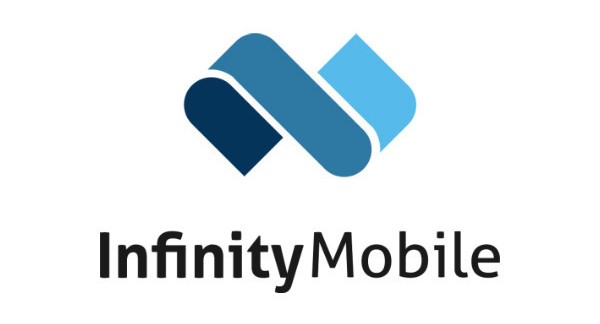wHAT is headless commerce?
A deeper dive in an api-first commerce world
These days are definitely not the ol' days anymore. While in the past you had either a desktop or a mobile to buy something online, today that all has changed. Not only have people changed device, even the channels where they buy have gone through a full metamorphosis. To support this change in behaviour, enter headless commerce. Let's find out what headless commerce is all about.

Geert Roete
Your host of the evening
What is headless commerce?
In its essence headless commerce is the splitting of the e-commerce part of a webshop (catalogs, products, payments,...) from the frontend. Call it 'less is more' where a headless commerce platform has no idea how the frontend looks like, and the only thing it is able is to respond to API queries.
For ecommerce architects that were raised with monolithic architectures à la Magento, this means going back to the start and fully rethink e-commerce.
Headless commerce is on the rise due to a number of factors. New devices have seen the past years the light, think about Google Home, Amazon Alexa and conversational commerce. Think about new ways of shopping like AR/VR where it becomes possible to virtually buy something in a virtual shop. Think about IOT. Think about marketplace shopping where people buy on the marketplace, but still fulfillment and delivery must happen. Think about people shopping in Instagram but still need a place to do the checkout.
While from a business and managerial point this headless commerce sounds pretty techie and slightly nerdy, splitting the front-end and back-end has several advantages (which we'll explain in the why).
For ecommerce architects that were raised with monolithic architectures à la Magento, this means going back to the start and fully rethink e-commerce.
Headless commerce is on the rise due to a number of factors. New devices have seen the past years the light, think about Google Home, Amazon Alexa and conversational commerce. Think about new ways of shopping like AR/VR where it becomes possible to virtually buy something in a virtual shop. Think about IOT. Think about marketplace shopping where people buy on the marketplace, but still fulfillment and delivery must happen. Think about people shopping in Instagram but still need a place to do the checkout.
While from a business and managerial point this headless commerce sounds pretty techie and slightly nerdy, splitting the front-end and back-end has several advantages (which we'll explain in the why).

Why headless commerce?
Why would you go for headless commerce? For those that are aware, a couple of years ago technocrats saw a lot of potential in IOT commerce (things that do online orders fully independently). This was coined as an early version of headless commerce, but it hasn't lived up to its promise yet. So why would you need headless commerce? Why would anyone need headless commerce? Let's sum up some considerations and see if headless is a match for you.
First of all go talk to your marketing people and ask if the webshop system that is being used, offers all they need in terms of flexibility, content placement, speed and visuals. Chances are big it isn't. Then ask your developers to do some changes to the webshop system. Chances are high it will take much time and they'll pray not to break any dependence between the several modules they have installed to make the container ship float.
When you feel your (large) webshop is a container ship that is tedious to steer, things become frustrating when new channels pop up (voice bots, chatbots, AR/VR, social media channels like Instagram and Facebook, marketplaces, ...). These different channels create a scattered feeling where your team needs to be all over the place, and most probably is forced to make choices (let's drop support for X, Y, Z). Since any entrepreneur knows that you must go where your customers are, dropping inbound channels just because the monolithic webshop is not supporting it is not really the prefered way to go.
In an ideal headless world, the Content Management Software that is being used by the marketing team can run totally free from the heavy webshop, and allows those motivated marketeers to create content for any of the mentioned channels. All operational e-commerce stuff is handled by a black box (the headless commerce platform) that communicates via API with the front-end channels.
First of all go talk to your marketing people and ask if the webshop system that is being used, offers all they need in terms of flexibility, content placement, speed and visuals. Chances are big it isn't. Then ask your developers to do some changes to the webshop system. Chances are high it will take much time and they'll pray not to break any dependence between the several modules they have installed to make the container ship float.
When you feel your (large) webshop is a container ship that is tedious to steer, things become frustrating when new channels pop up (voice bots, chatbots, AR/VR, social media channels like Instagram and Facebook, marketplaces, ...). These different channels create a scattered feeling where your team needs to be all over the place, and most probably is forced to make choices (let's drop support for X, Y, Z). Since any entrepreneur knows that you must go where your customers are, dropping inbound channels just because the monolithic webshop is not supporting it is not really the prefered way to go.
In an ideal headless world, the Content Management Software that is being used by the marketing team can run totally free from the heavy webshop, and allows those motivated marketeers to create content for any of the mentioned channels. All operational e-commerce stuff is handled by a black box (the headless commerce platform) that communicates via API with the front-end channels.
From an IT architectural point of view, going headless has also different advantages. Needless to say that separating front-end from back-end creates a cleaner architecture (bug fixes at the frontend are not impacting the back-end) and thus is beneficial for security and also scalability. A bloated architecture is reduced to its minimum.
With cleaner architecture and separation of concerns comes cost effectiveness. Time-to-market can be sped up as instead of a large containership that goes to water, it's more a number of smaller boats that are put in the water at the same time. Especially in a retailer context where omnichannel is a must, this flexbility can make the difference between victory and loss.
With cleaner architecture and separation of concerns comes cost effectiveness. Time-to-market can be sped up as instead of a large containership that goes to water, it's more a number of smaller boats that are put in the water at the same time. Especially in a retailer context where omnichannel is a must, this flexbility can make the difference between victory and loss.

Is headless commerce the best invention since sliced bread? Some disadvantages also deserve some attention. In case the headless commerce is fully run in-house as is done with the CMS front-end, it will require the IT team to maintain 2 different IT systems. This will introduce development overhead since two codebases must be maintained, 2 databases must be managed and chances are high the operational approach for the front-end will be different compared to the backend.
This dual approach has obviously an impact on cost of ownership. A decision on headless commerce should take into account the TCO and when all is done in-house this can become a big obstacle. With outsourced headless commerce, at least the cost can be better budgeted and no surprises will sit and wait at the front of your door.
Another disadvantage is that there is potential loss of platform functionality. When the webshop has both CMS and ecommerce functionality in one, there could be some functions that require high integration and simply do not work anymore when they are split. A good gap analysis on required functionality on the front-end should make sure all involved know what they will get, and what they will not get with headless commerce.
This dual approach has obviously an impact on cost of ownership. A decision on headless commerce should take into account the TCO and when all is done in-house this can become a big obstacle. With outsourced headless commerce, at least the cost can be better budgeted and no surprises will sit and wait at the front of your door.
Another disadvantage is that there is potential loss of platform functionality. When the webshop has both CMS and ecommerce functionality in one, there could be some functions that require high integration and simply do not work anymore when they are split. A good gap analysis on required functionality on the front-end should make sure all involved know what they will get, and what they will not get with headless commerce.
Interested to learn more?
Get in touch about headless commerce and what it can mean for your business.
